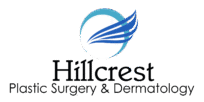
Can I breastfeed after breast augmentation?
This is a question that many women who are considering breast augmentation surgery have. The answer to this question is that it is generally safe to breastfeed after breast augmentation surgery. However, each woman’s situation is different, so it is critical to speak with Dr. Kenrick A. Spence about whether or not breastfeeding is right for you after your procedure. With an evaluation and more information about your condition, he can make a knowledgeable recommendation.
Things to keep in mind regarding breast augmentation if planning to breastfeed in the future
There are a few things to keep in mind if you decide to breastfeed after breast augmentation surgery. First, it is important to make sure that your surgeon uses a subglandular placement for your implants. This placement will help minimize the risk of complications while breastfeeding. Additionally, you will need to be especially careful not to damage your implants while breastfeeding. Make sure to use a comfortable position and plenty of pillows to support your breasts while feeding. Dr. Kenrick A. Spence may have additional recommendations for you to consider as well before undergoing the procedure.
What is involved in breast augmentation surgery?
Breast augmentation surgery is a procedure that involves the placement of silicone or saline implants into the breasts. The implants are inserted through a small incision in either the armpit, around the areola, or in the crease beneath the breast.
How do I learn more about breast augmentation?
Overall, breastfeeding after breast augmentation surgery is a safe and easy way to bond with your new baby. If you have any questions or concerns, be sure to speak with Dr. Kenrick A. Spence of Hillcrest Plastic Surgery. His practice is located at 130 Hillcrest Street and is open to new patients in the area of Orlando, FL considering elective plastic surgeries.



